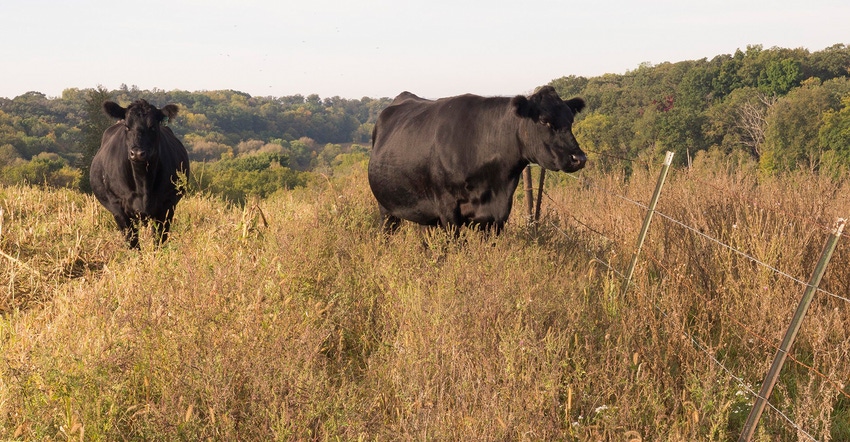September 1, 2017

By Lyssa Seefeldt
One of the largest investments farmers make with cattle is maintaining them. Feed costs account for the majority of the expense — often 60% to 70% of production costs.
To keep the cow-calf herd going, farmers largely rely on the income generated by the yearly production of calves. Without the income generated by the calf, a cow is costing you money just to keep her fed until the next breeding opportunity, as well as diverting valuable feed resources from your productive females. October is an opportune time to pregnancy-check your herd if you calve in the spring and breed your cattle in the early summer with a defined breeding window.
According to the USDA, across the United States, only 20% of beef farms complete palpations or ultrasounds to confirm pregnancy status. Pregnancy checks are a relatively inexpensive way to help you make management decisions in regards to whether that cow or heifer should be kept in the herd or sold before winter to avoid the feeding cost for a cow that isn’t going to produce a calf in the spring.
At first you may be reluctant to cull that really nice-looking cow that comes up open; however, over the course of several years of selective culling, you will encounter fewer cows that need to be culled for turning up open, as your reproductive efficiencies improve.
By removing your less-fertile animals using pregnancy checking as the guiding factor, you will have more opportunity in the following years to cull for other important reasons, such as removing animals with lower genetic potential, less-than-desirable confirmation, etc.
Once you have determined which cows are open, you have an opportunity to evaluate the condition of that animal and decide if she can be marketed immediately or if she needs to gain some weight. Note that cows need to be healthy with a sound confirmation to be considered for feeding to improve condition before marketing.
Overly thin cows are more at risk for bruising en route to sale and will likely be discounted at the sale barn. Take a few minutes and determine how much weight you would ideally put on the cow and how much it would cost to do so. For medium-framed animals, to increase one body condition score requires the animal to gain 75 pounds. By doing some planning now, you can add value to your cull cows while improving your reproductive efficiency.
Seefeldt is the Marquette County Extension agriculture agent. This column is provided by the University of Wisconsin Extension’s Wisconsin Beef Information Center. Learn more at fyi.uwex.edu/wbic.
You May Also Like




